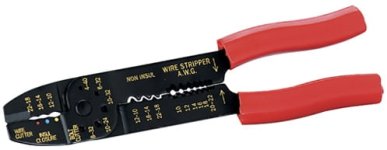tomjasz
1 GW
See if nobuo will engage. He's quite the wizard. Also in the repository thread. Try this there.
tomjasz said:See if nobuo will engage. He's quite the wizard. Also in the repository thread. Try this there.
He's on Facebook ESOffroader said:tomjasz said:See if nobuo will engage. He's quite the wizard. Also in the repository thread. Try this there.
Thanks, I'll try, I have not seen him post in a while.
QuestionMan said:I read through the whole thread and still confused about something.
How do you choose the optimal battery size?
Is it better to use a larger size lead acid or more closer to 1100 Cranking amps this way you will keep the pulse time lower?
I have an 800 cranking amp battery, but I could also connect a 2nd battery to that giving me 1400 cranking amps. Since both batteries are available would it be better to always use both of them for higher amps?
I may weld .15 or .2 nickel.
mistercrash said:When am I getting mine? :lol: I need to make some tool packs out of cells left over from tool packs :lol:
dssguy1 said:I have a RED top Optima battery that is rated at 1000 CA, that is better than my standard 500-600 battery?
I don't want to blow up the welder!
QuestionMan said:Thanks for answer my question.
I have one more question. How do I choose and find the optimal pulse time?
marty said:I don't know the answer to the question? But will answer any way.
Experiment. Get some scrap batteries and some nickel whatever thickness you plan on using. Turn the adjustment knob all the way one way. Make test weld. Turn the adjustment knob the opposite way. Make test weld. Adjust knob till welds look good. Test welds by trying to pull the nickel off the battery.
QuestionMan said:marty said:I don't know the answer to the question? But will answer any way.
Experiment. Get some scrap batteries and some nickel whatever thickness you plan on using. Turn the adjustment knob all the way one way. Make test weld. Turn the adjustment knob the opposite way. Make test weld. Adjust knob till welds look good. Test welds by trying to pull the nickel off the battery.
Thanks.
I don't have any scrap 18650 cells just yet, is it possible to use like a C cell disposable battery to do the test welds on?
dssguy1 said:http://www.optimabatteries.com/en-u...51-34r-redtop-starting-battery-reversed-post/
.0030 Ohms
I think it is kind of a beast of a battery! Still suggest I try it? I'm only welding .15mm Nickel and have had fine results with my 500-600 CA battery.
What is the min and max pulse on the REV 2 dial? And is it linear from min to max? Just so I have some clue what value I am setting. I don't have a fancy plastic box like you have in your video!
mistercrash said:riba2233, I made a 3S80P battery out of salvaged Sony US18650V cells. If the cells still have their total capacity, the battery is 11.1V nominal 120Ah. Capable of 10C constant. Did I build something too powerful or is it fine for the welder.
Thanks
Ray



QuestionMan said:I don't have any scrap 18650 cells just yet, is it possible to use like a C cell disposable battery to do the test welds on?
